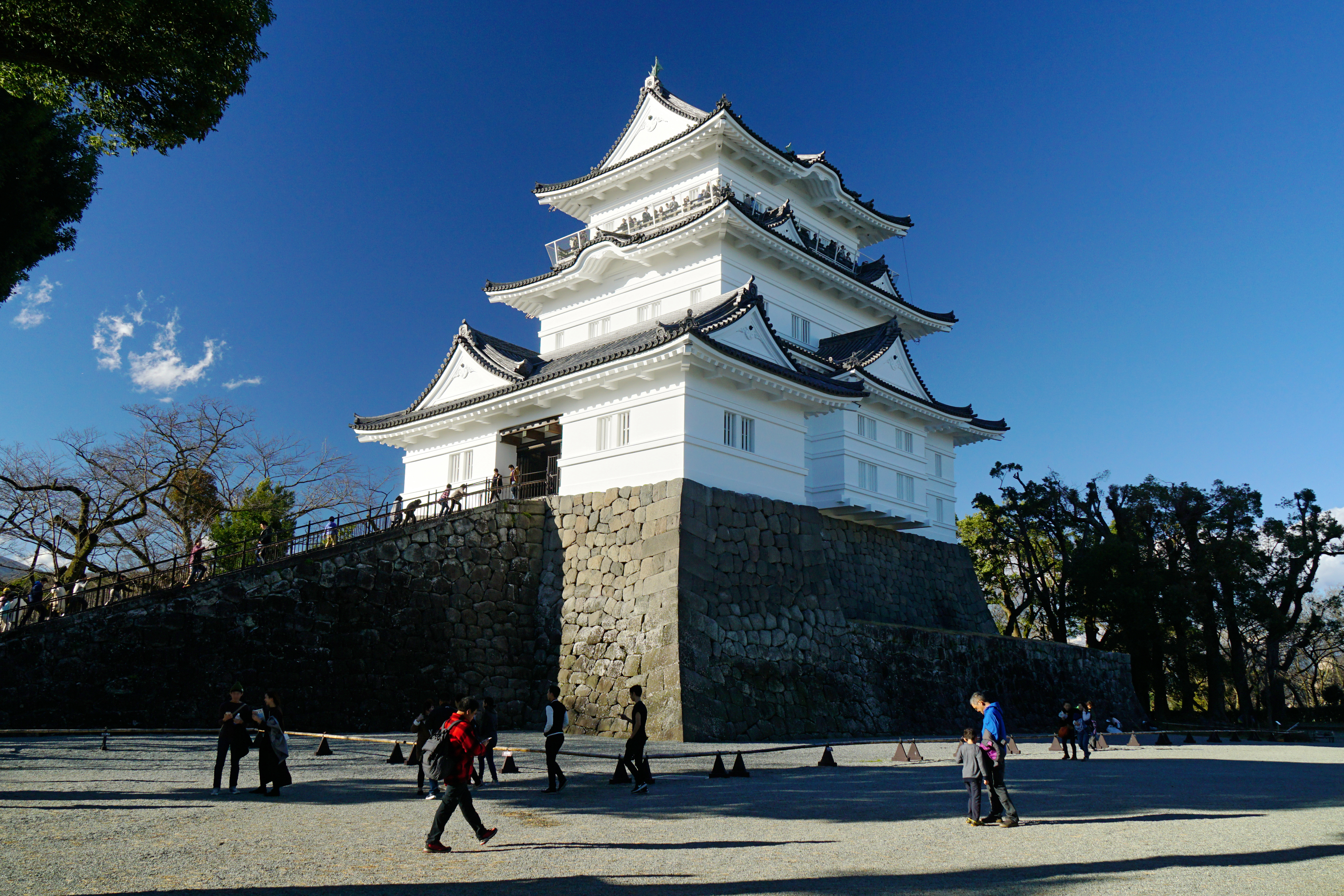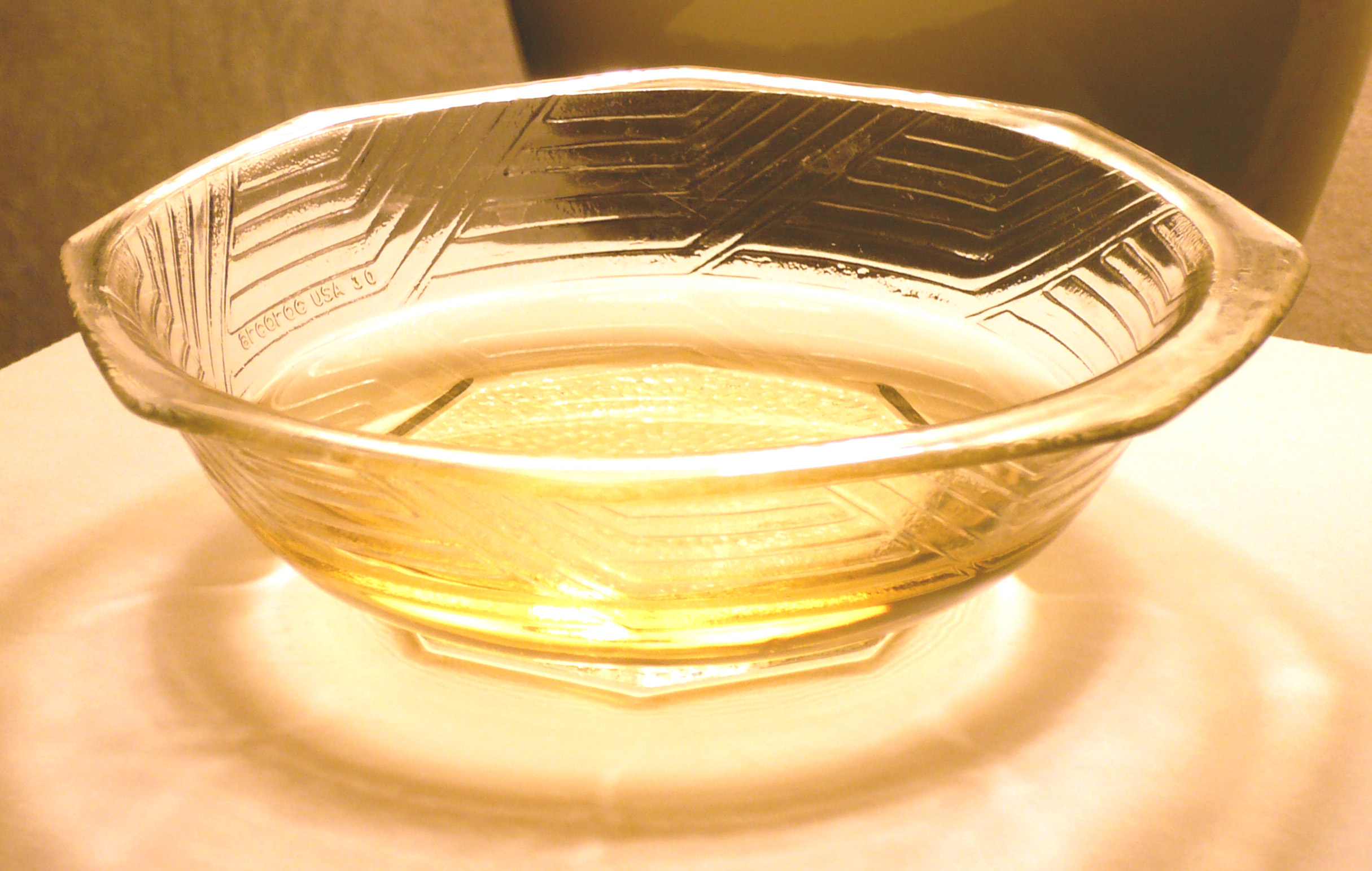|
Shutō (seafood)
is a specialty ''shiokara'' of Odawara, Kanagawa Prefecture, in Japan.New York Magazine -Vol. 22, No. 37 - Magazine 18 Sep 1989 - Page 62 "Fiercely fragrant shuto — bonito liver pickled in sake." It is made by pickling the entrails of bonito (''katsuo''), fermenting them for more than six months, then chopping them up and sometimes adding a mixture of ''sake'', honey, and ''mirin'' to them. There is also a tuna A tuna is a saltwater fish that belongs to the tribe Thunnini, a subgrouping of the Scombridae (mackerel) family. The Thunnini comprise 15 species across five genera, the sizes of which vary greatly, ranging from the bullet tuna (max length: ... (''maguro'') type that has a milder character. The name of the dish means "sake thief" and is derived from the fact that it is a good side dish for ''sake''. There are variations of shuto, such as hot pepper, green onions and others. The combination of the ''shutō'' and Japanese ''sake'' creates a wonderful culinary ... [...More Info...] [...Related Items...] OR: [Wikipedia] [Google] [Baidu] |
Shuto Noodles
Shuto or variants may refer to: *A knifehand strike, known in Japanese as ''shutō-uchi'' *Shutō (seafood), Japanese tuna liver seafood pickle *Shuto Expressway (首都高速道路, Shuto Kōsoku-dōro) network of toll expressways *Šuto Orizari Municipality (Macedonian: Шуто Оризари) municipality *Shuuto, long "shootball" pitch in Japanese baseball People with the name *, Japanese footballer *Shuto Ando (1994) Japanese basketball player *Shuto Inaba (1990) Japanese footballer *Shuto Kawai (1993) Japanese footballer *Shuto Kono (1993) Japanese footballer *Shuto Machino (1999) Japanese footballer *, Japanese professional baseball player *Shuto Yamamoto is a Japanese football player currently playing for Shonan Bellmare. Club statistics ''Updated to 5 November 2022''.Nippon Sports Kikaku Publishing inc./日本スポーツ企画出版社"J1&J2&J3選手名鑑 2014 (NSK MOOK)" 14 February 2014, ... (1985) Japanese footballer *, Japanese professional baseball player {{ ... [...More Info...] [...Related Items...] OR: [Wikipedia] [Google] [Baidu] |
Shiokara
, is a food in Japanese cuisine made from various marine animals that consists of small pieces of meat in a brown viscous paste of the animal's heavily salted, fermented viscera. The raw viscera are mixed with about 10% salt, 30% malted rice, packed in a closed container, and fermented for up to a month. ''Shiokara'' is sold in glass or plastic containers. The flavor is similar in saltiness and fishiness to that of European cured anchovies, but with a different texture. One of the best-known ''chinmi'' ("rare tastes"), it is quite strong and is considered something of an acquired taste even for the native Japanese palate. It was a valuable protein in post-war Japan because food was scarce and it did not require refrigeration. It continued to be eaten as a condiment for rice and in bars. One method of enjoying it is to consume the serving in one gulp and to follow it with a shot of straight whisky. Some bars in Japan specialize in ''shiokara''. Some types of ''shiokara'' * I ... [...More Info...] [...Related Items...] OR: [Wikipedia] [Google] [Baidu] |
Odawara, Kanagawa
is a city in Kanagawa Prefecture, Japan. , the city had an estimated population of 188,482 and a population density of 1,700 persons per km2. The total area of the city is . Geography Odawara lies in the Ashigara Plains, in the far western portion of Kanagawa Prefecture at the southwestern tip of the Kantō region. It is bordered by the Hakone Mountains to the north and west, the Sakawa River to the east, and Sagami Bay of the Pacific Ocean to the south. Surrounding municipalities Kanagawa Prefecture * Minamiashigara * Ninomiya * Ōi, Kaisei, Nakai *Hakone, Hakone, Manazuru, Yugawara Climate Odawara has a humid subtropical climate (Köppen ''Cfa'') characterized by warm summers and cool winters with light to no snowfall. The average annual temperature in Odawara is 13.4 °C. The average annual rainfall is 2,144 mm with September as the wettest month. The temperatures are highest on average in August, at around 24.2 °C, and lowest in January, at around 2.9& ... [...More Info...] [...Related Items...] OR: [Wikipedia] [Google] [Baidu] |
Japan
Japan ( ja, 日本, or , and formally , ''Nihonkoku'') is an island country in East Asia. It is situated in the northwest Pacific Ocean, and is bordered on the west by the Sea of Japan, while extending from the Sea of Okhotsk in the north toward the East China Sea, Philippine Sea, and Taiwan in the south. Japan is a part of the Ring of Fire, and spans Japanese archipelago, an archipelago of List of islands of Japan, 6852 islands covering ; the five main islands are Hokkaido, Honshu (the "mainland"), Shikoku, Kyushu, and Okinawa Island, Okinawa. Tokyo is the Capital of Japan, nation's capital and largest city, followed by Yokohama, Osaka, Nagoya, Sapporo, Fukuoka, Kobe, and Kyoto. Japan is the List of countries and dependencies by population, eleventh most populous country in the world, as well as one of the List of countries and dependencies by population density, most densely populated and Urbanization by country, urbanized. About three-fourths of Geography of Japan, the c ... [...More Info...] [...Related Items...] OR: [Wikipedia] [Google] [Baidu] |
Bonito
Bonitos are a tribe of medium-sized, ray-finned predatory fish in the family Scombridae – a family it shares with the mackerel, tuna, and Spanish mackerel tribes, and also the butterfly kingfish. Also called the tribe Sardini, it consists of eight species across four genera; three of those four genera are monotypic, having a single species each. Bonitos closely resemble the skipjack tuna, which is often called a bonito, especially in Japanese contexts. Etymology The fish's name comes from the Spanish ''bonito'' 'pretty'.''Oxford English Dictionary'', 3rd edition, 2018''s.v.''/ref> An older theory suggests that it comes from an Arabic word ''bainīth'', but that may have been derived from Spanish as well. Species * Genus '' Sarda'' ( Cuvier, 1832) ** Australian bonito, ''S. australis'' (Macleay, 1881) ** '' Sarda chiliensis'' (Cuvier, 1832) *** Eastern Pacific bonito, ''S. c. chiliensis'' (Cuvier, 1832) *** Pacific bonito, ''S. c. lineolata'' ( Girard, 1858) ** Striped b ... [...More Info...] [...Related Items...] OR: [Wikipedia] [Google] [Baidu] |
Sake
Sake, also spelled saké ( ; also referred to as Japanese rice wine), is an alcoholic beverage of Japanese origin made by fermenting rice that has been polished to remove the bran. Despite the name ''Japanese rice wine'', sake, and indeed any East Asian rice wine (such as huangjiu and cheongju), is produced by a brewing process more akin to that of beer, where starch is converted into sugars which ferment into alcohol, whereas in wine, alcohol is produced by fermenting sugar that is naturally present in fruit, typically grapes. The brewing process for sake differs from the process for beer, where the conversion from starch to sugar and then from sugar to alcohol occurs in two distinct steps. Like other rice wines, when sake is brewed, these conversions occur simultaneously. The alcohol content differs between sake, wine, and beer; while most beer contains 3–9% ABV, wine generally contains 9–16% ABV, and undiluted sake contains 18–20% ABV (although this is often ... [...More Info...] [...Related Items...] OR: [Wikipedia] [Google] [Baidu] |
Honey
Honey is a sweet and viscous substance made by several bees, the best-known of which are honey bees. Honey is made and stored to nourish bee colonies. Bees produce honey by gathering and then refining the sugary secretions of plants (primarily floral nectar) or the secretions of other insects, like the honeydew of aphids. This refinement takes place both within individual bees, through regurgitation and enzymatic activity, as well as during storage in the hive, through water evaporation that concentrates the honey's sugars until it is thick and viscous. Honey bees stockpile honey in the hive. Within the hive is a structure made from wax called honeycomb. The honeycomb is made up of hundreds or thousands of hexagonal cells, into which the bees regurgitate honey for storage. Other honey-producing species of bee store the substance in different structures, such as the pots made of wax and resin used by the stingless bee. Honey for human consumption is collected from wild ... [...More Info...] [...Related Items...] OR: [Wikipedia] [Google] [Baidu] |
Mirin
is a type of rice wine and a common ingredient in Japanese cooking. It is similar to sake but with a lower alcohol content and higher sugar content. The sugar content is a complex carbohydrate that forms naturally during the fermentation process; no sugars are added. The alcohol content is further lowered when the liquid is heated. Three types of mirin are common. The first is ''hon mirin'' (literally: true mirin), which contains about 14% alcohol and is produced by a 40 to 60 day mashing (saccharification) process. The second is ''shio mirin'' (literally: salt mirin), which contains a minimum of 1.5% salt to prevent consumption in order to avoid alcohol tax. The third is ''shin mirin'' (literally: new mirin), or ''mirin-fu chomiryo'' (literally: mirin-like seasoning), which contains less than 1% alcohol, yet retains the same flavor. In the Edo period, mirin was consumed as ''amazake''. O-toso, traditionally consumed for the Japanese New Year, can be made by soaking a spic ... [...More Info...] [...Related Items...] OR: [Wikipedia] [Google] [Baidu] |
Tuna
A tuna is a saltwater fish that belongs to the tribe Thunnini, a subgrouping of the Scombridae (mackerel) family. The Thunnini comprise 15 species across five genera, the sizes of which vary greatly, ranging from the bullet tuna (max length: , weight: ) up to the Atlantic bluefin tuna (max length: , weight: ), which averages and is believed to live up to 50 years. Tuna, opah and mackerel sharks are the only species of fish that can maintain a body temperature higher than that of the surrounding water. An active and agile predator, the tuna has a sleek, streamlined body, and is among the fastest-swimming pelagic fish – the yellowfin tuna, for example, is capable of speeds of up to . Greatly inflated speeds can be found in early scientific reports and are still widely reported in the popular literature. Found in warm seas, the tuna is commercially fished extensively as a food fish, and is popular as a bluewater game fish. As a result of overfishing, some tuna species, s ... [...More Info...] [...Related Items...] OR: [Wikipedia] [Google] [Baidu] |





